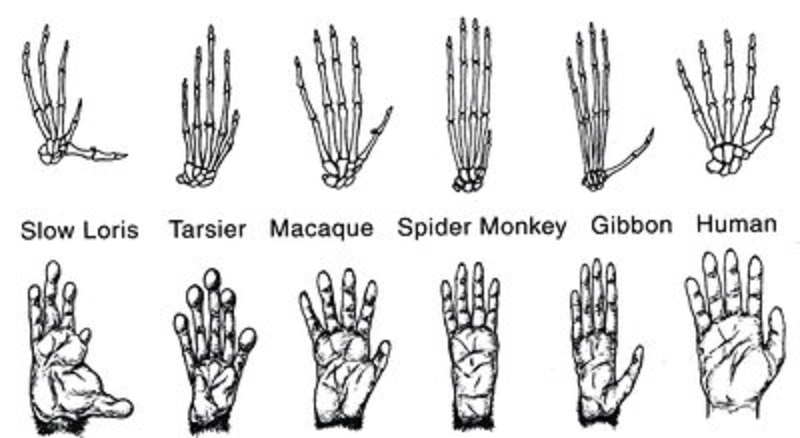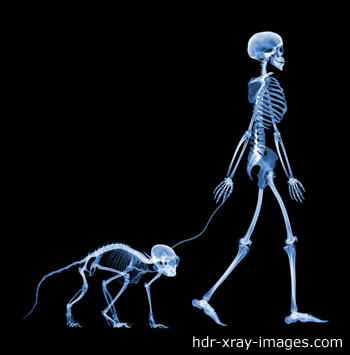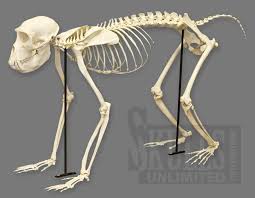What are some differences between the monkey's and a human skeleton?
1 Answer
There are innumerable differences: few major characters could be discussed here.
- Monkeys walk on all four limbs: hence forearms are comparatively longer. In human hindlimb is comparatively longer. Phalanges of digits longer in monkeys, compared to those of human.
http://elearning.la.psu.edu/anth/022/lesson_2/images/primate-hands_large
( )
)
- Hip is narrower in monkeys and angle of attachment of femur in acetabulum differs a lot from that in human: this leads to appearance of 'arched' leg when monkeys try to stand on their hind limbs. Hip in human is short but wide.
-
Both thumb (of forelimb) and big toe (of hind limb) are perfectly opposable in monkeys, to help them in grasping tree branches. In human, only thumb is opposable.
-
Skull of monkey contains very small cranial space, while there is pronounced 'occipital bun' in human i.e. back of skull is projected.
-
Foramen magnum (opening through which spinal cord emerges out of skull) is more posterior in position compared to vertically downwards position of foramen magnum in human skull.

( )
)
-
Vestigial tail bone coccyx is present human skeleton, but skeleton of monkey displays a series of tail vertebrae.
-
Number of lumbar bones more in skeleton of monkey, which are only five in case of human skeleton.
-
Vertebral column of monkey is arched in the shape of C, while vertebral column in human is in the form S.
( )
)
